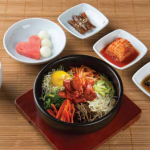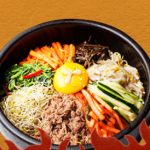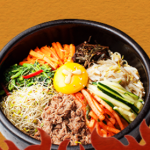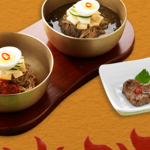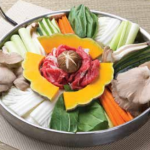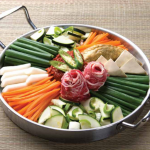Korean cuisine has gained global recognition for its bold flavors, vibrant colors, and unique combination of ingredients. From spicy and savory to sweet and tangy, the cuisine offers a delicious array of dishes that have become iconic representations of Korean culture. Let’s delve into some of the most beloved and well-known dishes that come to mind when we think of Korean cuisine.
Introduction
Korea, a country rich in history and traditions, has a culinary heritage that dates back centuries. Korean cuisine, known as “hansik,” encompasses a wide variety of dishes that cater to diverse tastes and preferences. From street food delicacies enjoyed on-the-go to elaborate feasts shared with loved ones, Korean food is an integral part of the nation’s identity. Let’s uncover some of the iconic dishes that have captured the hearts and palates of people around the world.
The Art of Kimchi
No discussion of Korean cuisine would be complete without mentioning kimchi. This traditional side dish, made from fermented vegetables such as cabbage or radishes, is a staple in Korean households. Known for its pungent aroma and spicy kick, kimchi is not only delicious but also nutritious. It is a true representation of the Korean culinary art, showcasing the delicate balance of flavors and textures that Korean cuisine is famous for.
Bibimbap: A Harmonious Medley
Bibimbap, which translates to “mixed rice” in English, is a colorful and balanced dish that reflects the harmony found in Korean culture. This popular dish is created by mixing together rice, various vegetables, meat (often beef), and a fried egg, before adding a dollop of spicy gochujang sauce. The combination of flavors and textures in bibimbap creates a delightful symphony of tastes in every bite, making it a cherished dish both in Korea and worldwide.
The Irresistible Korean BBQ
Korean BBQ, or “gogi-gui,” has gained massive popularity worldwide for its interactive dining experience and mouthwatering flavors. Thinly sliced, marinated meats such as beef, pork, or chicken are grilled right at the table, allowing diners to savor them piping hot. The tantalizing aroma and the sizzling sound of the meat being grilled are an essential part of the Korean BBQ experience. Accompanied by an assortment of banchan (side dishes) and wrapped in lettuce or sesame leaves, Korean BBQ is an absolute delight for meat lovers.
Soul-Soothing Jjigae
Jjigae, a hearty and comforting stew, is a pillar of Korean cuisine. With various regional variations, popular jjigae dishes are kimchi jjigae (fermented cabbage stew) and doenjang jjigae (soybean paste stew). These flavor-packed stews are simmered with a variety of ingredients, including vegetables, tofu, and sometimes meat or seafood. Bursting with savory, spicy, and umami flavors, jjigae warms both body and soul, making it an all-time favorite among Koreans.
Conclusion
Korean cuisine, with its close ties to the country’s history and culture, offers a truly unique and memorable dining experience. From the spicy and tangy kimchi to the harmonious bibimbap, and the sizzling Korean BBQ to the soul-soothing jjigae, each dish encapsulates the essence of Korean flavors and traditions. Traditional yet modern, Korean cuisine continues to captivate food enthusiasts worldwide, ensuring that these iconic dishes will be celebrated for years to come.
Frequently Asked Questions (FAQs)
- Is Korean cuisine always spicy?
-
While Korean cuisine is known for its love of heat and spice, not all dishes are fiery. There are plenty of mild and savory options available, catering to different taste preferences.
-
Can I find Korean cuisine outside of Korea?
-
Yes, Korean cuisine has gained significant popularity worldwide, and you can now find Korean restaurants in many major cities. The iconic dishes mentioned in this article are often featured on their menus.
-
Are Korean BBQ restaurants suitable for vegetarians?
-
Korean BBQ restaurants primarily focus on grilled meats, but some establishments offer vegetarian options, such as tofu or vegetable barbecue. Additionally, Korean cuisine offers an abundance of vegetable-based dishes that are vegetarian-friendly.
-
What is the significance of banchan in Korean cuisine?
-
Banchan refers to a variety of side dishes that accompany Korean meals. These small dishes not only provide a range of flavors and textures but also represent the importance of communal dining and sharing food among Koreans.
-
What are some popular Korean desserts?
- Korean cuisine offers a delectable selection of desserts. Among the popular choices are patbingsu (shaved ice dessert with sweet toppings), hotteok (sweet pancakes with a syrupy filling), and yakgwa (fried cookies made with honey, sesame oil, and ginger).
These are just a few common questions that arise when exploring the world of Korean cuisine. If you have any more inquiries, feel free to contact us!

